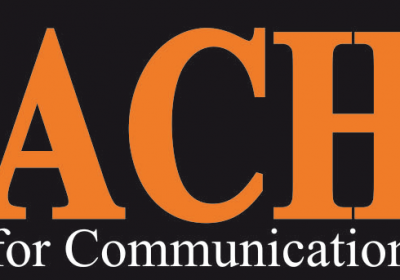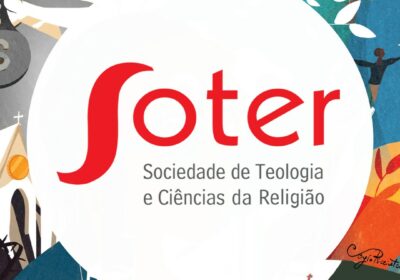 A revista francesa Essachess recebe até o dia 2 de abril artigos científicos para o dossiê Gênero, Religião e Mídia. O número temático terá como editora convidada a professora Dra. Magali do Nascimento Cunha (Intercom). Os textos podem ser escritos em inglês ou francês. A publicação está prevista para dezembro de 2019. Mais detalhes abaixo:
A revista francesa Essachess recebe até o dia 2 de abril artigos científicos para o dossiê Gênero, Religião e Mídia. O número temático terá como editora convidada a professora Dra. Magali do Nascimento Cunha (Intercom). Os textos podem ser escritos em inglês ou francês. A publicação está prevista para dezembro de 2019. Mais detalhes abaixo:
Throughout the history of humanity, social groups have built ways of life and cultures, which determined specific roles for men and women. With the creation of such roles, a new ideology of patriarchy emerged in diverse cultures, which established that the basis for social organization and social order rests in the power of man as the leader, as the provider for the family, and even as the preserver of the species. As history demonstrates, this ideology was constructed, replicated and dispersed further through education, religion, law, and the media.
At the same time, it is important to emphasize that the aim of an ideology is to change the perception of reality and make things ostensibly natural so that men and women would embrace the new ideas and attitudes, reproduce them, and disseminate them further. Recalling the reflections of a Brazilian educator, Paulo Freire, along with a new ideology comes always a culture of silence and domestication, which helps embed the new ideology into the social fabric to the point that when people are called to reflect on alternative paths, they would object to it by saying, “no, it has always been like this.”
Nevertheless, this ideology of patriarchy had been increasingly challenged in the West. The feminist movements, which during the 19th and 20th centuries have germinated new ideas on gender, along with the progress of science and technology, strengthened and consolidated a process of contestation. One outcome of this contestation was the emergence of the concept of gender beyond feminine and masculine, as an analytical scientific category, which derived from the reflections of philosopher Simone de Beauvoir, who stated that “one is not born, but rather becomes, a woman.” Another outcome of this contestation was the development of the autonomy of sexuality from human reproduction.
Therefore, the concept of “gender”, as an analytical scientific category, challenges both social sciences and human sciences; making it possible to study the new meanings of “masculine” and “feminine” as genders, while also challenging what it means to be a “man” or “woman” from the perspective of the historical understandings of these fixed categories. In this sense, one may conclude that it is not the category of sex that determines the understanding of life, but the category of gender that challenges these fixed historic classifications conceived by the patriarchy on what it means to be a “man” or a “woman”.
This dynamic also opens new understandings and perspectives on homosexuality and homoaffectivity.
Insofar as the contestation of the patriarchal ideology is concerned, throughout history, there have been some advances in gender justice (e.g. gender recognition, gender representation, women rights, etc.), much remains to be developed in the social life. In this process, organized religions play a prominent role, especially those entrenched into patriarchal ideology, which either repress movements for gender justice, or are open to change.
Media represented and engaged the dynamics of patriarchal ideology throughout their tensions and progress by affirming it or by opposing it through various communicational processes such as journalism, advertisement, entertainment, social media, and so on. As such, organized religions had been identified not only as participants to the narratives and discourses on patriarchal ideology, but also as their protagonists or producers.
Although interdisciplinary studies on media and religion have been successfully consolidated in the areas of teaching and research, their intersection with the gender studies is still underdeveloped. Little attention has been given to the subject of women and the feminine in the study of the relationship between media and religion, and extremely deficient attention was given to homoaffectivity. However, there is a significant research opportunity due to a rich range of themes and phenomena that occur between gender on one hand, and the intersection between religion and media on the other.
Therefore, this issue of the Essachess – Journal for Communication Studies attempts to help filling this gap by exploring emerging themes and perspectives that rest at the triple intersection between gender, religion and media. Paper proposals are welcome with theoretical approaches and case studies focusing on women’s issues, as related to the following research subjects (but not exhaustive):
(1) the representation, the expression and the identities of women in secular and religious media content;
(2) the way women relate to religious representations and expressions in secular and religious media content;
(3) the place (role, influence, authority, visibility, leadership) of religious women (in institutional and non-institutional settings) in religious media;
(4) the actions of religious women in the struggle for gender equality in religious and secular media;
(5) the approaches and the representations of gender equality in world religions by secular media;
(6) the approaches and the representations of gender equality in world religions by new media.
Important Deadlines
– April 2, 2019: submission of the proposal in the form of an abstract of maximum 2 pages. The proposal must include a list of recent references and 5 keywords;
– April 22, 2019: acceptance of the proposal;
– July 15, 2019: full paper submission;
– October 15, 2019: full paper acceptance.
Full papers should be between 6,000-8,000 words in length. Papers can be submitted in English or French. The abstracts should be in English and French (150-200 words) followed by 5 keywords. Please provide the full names, affiliations, and e-mail addresses of all authors, indicating the contact author. Papers, and any queries, should be sent to: essachess@gmail.com
Authors of the accepted papers will be notified by e-mail.
The journal will be published in December 2019.
Saiba mais sobre a chamada acessando o <<<site da revista Essachess>>>.




